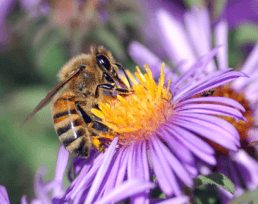Why Flowers Have Color
Like humans, flowers inherit their appearance from genes. Pigments are “born” into these plants, producing a range of colors across the spectrum. The same chemical, carotenoid, that produces pigment in tomatoes and carrots, also produces yellow, red, or orange color in certain flowers. Another chemical, anthocyanin, is responsible for producing red, pink, blue, and purple-colored flower petals. While many people see these plants as purely decorative, flowers aren’t colorful just to be pretty – they need their color for survival.
The Birds and the Bees
The birds and the bees are responsible for the reproduction of certain flowers – literally. This is because bright colors help attract these species and other animals, often enticing them to land on the flower. Once there, the insects and animals gather the flower’s pollen and nectar for food and then move on to the next colorful flower to repeat the process. Pollen sticks to their feet and bodies as they move from plant to plant, spreading some of this pollen to other flowers and causing pollination and reproduction to occur.
This survival tactic is not just a coincidence, however. Researchers believe flowers evolve their features over time to better attract birds, bees, and other pollinators. To lure hummingbirds, for example, certain flowers produce red and orange colors, while certain plant species produce bright colored petals or ultraviolet patterns to attract bees. After a while, animals and insects begin to connect the flower’s color to rewarding food sources and are more likely to seek out these types of flowers for pollen and nectar in the future as a result. While other flower features, such as texture and fragrances, are also used to attract pollinators, a plant’s color is vital to its survival from one generation to the next.
What flowers are you attracted to?










